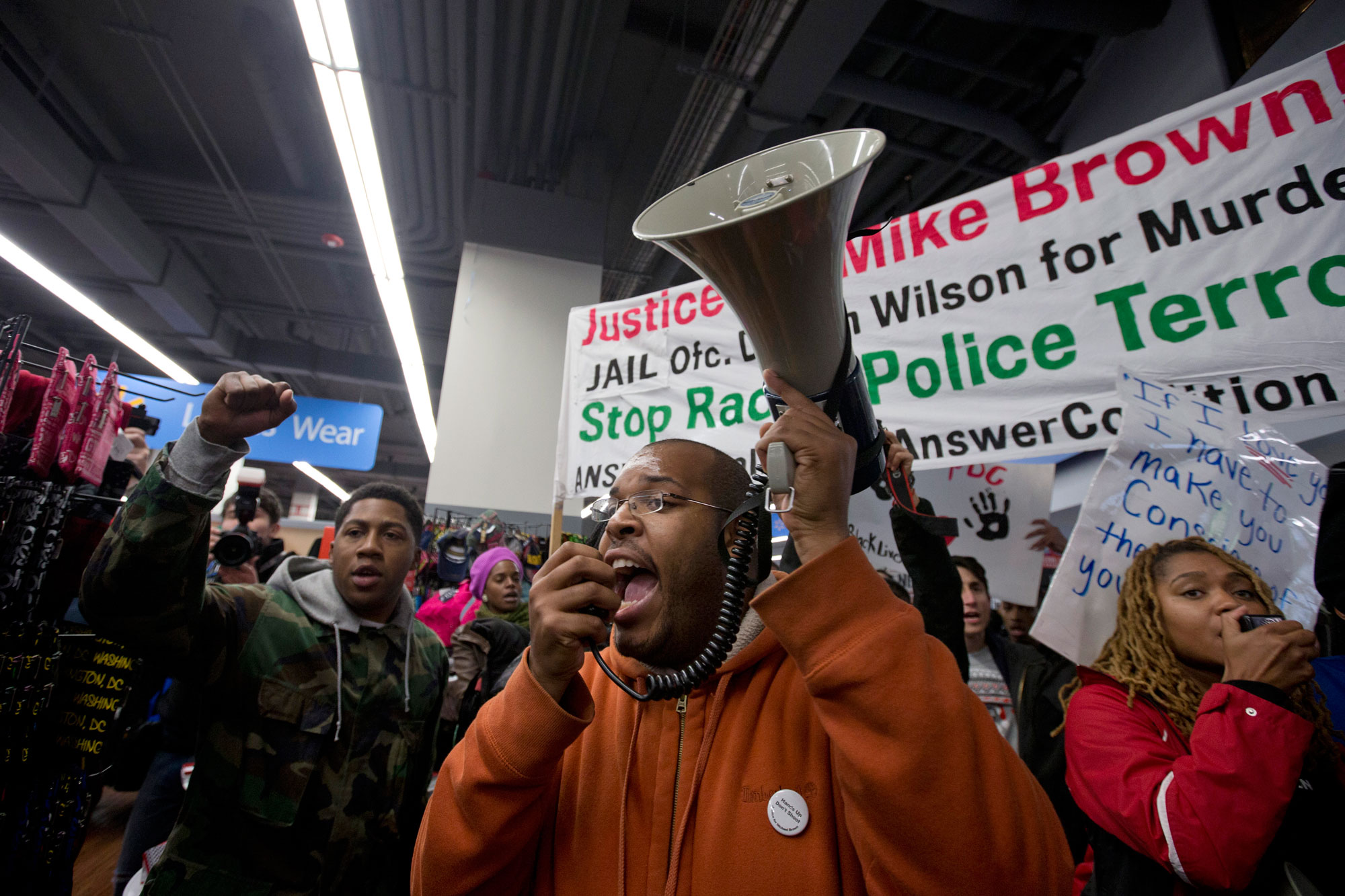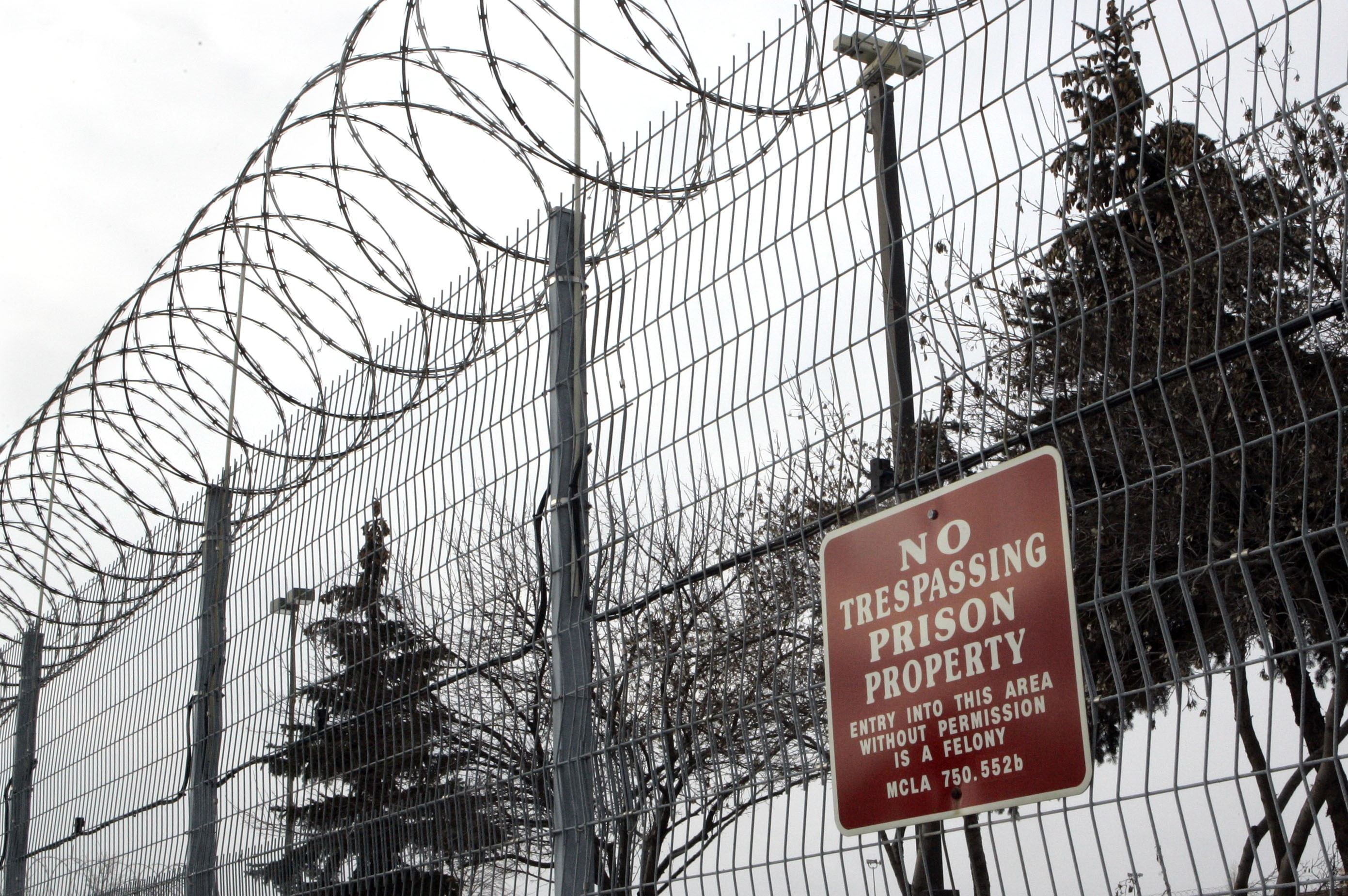Officially, the United States ended debtors’ prisons in 1833. Unofficially, as we saw in the Justice Department’s report on racially biased policing in Ferguson, there is a system of fines and fees for minor crimes that often result in jail time for the poor, mostly black citizens who cannot afford to pay them.
To provide more context on the issue, I talked with Peter Edelman, Georgetown University law professor and former staffer for Robert F. Kennedy and Bill Clinton, about his new book Not a Crime to be Poor: The Criminalization of Poverty in America.
Get TalkPoverty In Your Inbox
Rebecca Vallas: So, just to start off, what got you interested in writing this book?
Peter Edelman: I’d been working on poverty issues for long time, and I thought I’d kind of seen everything. But when it came out that Ferguson’s budget was based on hauling everybody into court and whacking them with these huge fines and fees, it got me interested. I realized this is really something that people need to know more about than they do.
RV: Part of what you did to research for the book was to speak with an array of lawyers who represent clients facing these problems. (In full disclosure, I’m one of those people you spoke with in my capacity as a recovering legal aid lawyer who used to represent these clients.) Would you mind sharing one of the client stories that came up in your research?
PE: Absolutely. Vera Cheeks, who’s a resident of Bainbridge, Georgia, was pulled over and ticketed for rolling through a stop sign. The judge hit her with a $135 fine—which in this business is a relatively small one—and ordered her to pay in full immediately. She told him she was unemployed and caring for her terminally ill father and had no money.
If you’re low-income and charged with a crime, you’re supposed to get a lawyer. And 43 states are charging money for it.
The judge said he would give her three months of “probation” to pay up, and he sent to her a room behind the courtroom where Cheeks says, “There was a real big lady, and there were cells on both sides of the room and there was a parade of people paying money to the lady. They were all black. It was like the twilight zone, totally mind-boggling.”
The woman said Cheeks now owed $267; the fine, plus $105 for the for-profit probation people, and $27 for the Georgia Victims Emergency Fund. The woman put a paper in front of Cheeks and told her to sign it. Cheeks said she would not. The woman said, “You’re refusing to sign the paper? I’m going to tell the judge and put you in jail for five days.” Cheeks still refused and finally the woman demanded $50 or else Cheeks would go to jail right then. Cheeks’ fiancé, who was at the courthouse, raised the money by pawning her engagement ring and a lawn implement.
She avoided jail, but Cheeks remained at risk of being locked up if she was late with even one payment.
RV: You mentioned that this practice first drew serious national attention after the killing of Michael Brown in 2014, which cast eyes, nationally, on Ferguson. But not only was this not a new phenomenon, it has not been restricted to Ferguson. I personally saw something very similar play out in Philadelphia when I was still working in legal aid. What’s the story behind the rise of fines and fees? You’ve put a face on the issue for us, but what’s driving what has really become a national trend?
PE: Well, you could say Grover Norquist. It’s the anti-tax rebellion that goes back quite a bit in the past, certainly a couple decades or more. Municipalities just didn’t get the money they needed to run their government, so they turned to going after people who were essentially defenseless because there aren’t anywhere near the number of lawyers that we need. And then you get added to that the broken windows.
RV: You’re referring to broken windows policing.
PE: Yes, absolutely. There was this belief that if we brought people in on junky little stuff, that would clean up the city. The big source of it that they use around the country is driver’s license suspensions. In California, for example, 4 million people just a couple years back had lost their licenses. They didn’t actually throw them in jails, like they do in many, many other places in the country. But they could take it out of their paycheck or their tax return. And so California was making billions of dollars going after these people.
And they don’t take away the driver’s license only for something you did when you’re driving. They do it for a lot of different things.
RV: People may be most familiar with traffic violations, but your book looks at a whole other range of types of fines and fees that states and localities are now leveeing on people, largely black and brown, largely low-income populations, some of which are particularly shocking. For example, you expose in your book that in 43 states people are actually charged for exercising their right to counsel if they need a public defender.
PE: That shocked me. It was a terrific study done by Joe Shapiro of NPR. It doesn’t compute, right? If you’re low-income and charged with a crime, you’re supposed to get a lawyer. And 43 states are charging money for it.
RV: Well, you’re a recovering lawyer, too. How is this not unconstitutional?
PE: Well, it is. But it’s got a combination of weasel language in the Supreme Court case, and it’s also so prevalent you would need the legislature to fix it and they want the money. And to sue in each instance is just very difficult, so there it is. The judge says, “Looks like you got a nice tattoo on your arm there, so you must have the money to pay for the lawyer or pay for the fine,” or, “You’ve got these fancy shoes and so you’re able to pay.”
RV: Wrapped up in this is effectively a vicious cycle. The people that you’re profiling in this book begin without having actually committed any crime, and it never ends just because they are poor and can’t afford to get out from under a debt.
PE: Well, this raises money bail, because it’s a major player in all of this. So, as you said, someone who’s innocent, but has allegedly done some very small-potato thing. Nonetheless, bail is set at $500 or $1,000, and they don’t have it and they can’t get it. So how do they get out of jail? They plead guilty even though they’re not. Then they get a payment plan. And then they can’t pay it.
At that point, when they haven’t paid it and they have pleaded guilty, it’s a whole new violation. They owe the criminal debt; they didn’t pay so they’re back in jail again. There’s another bail deal. There’s more money that they owe. It goes on and on and on.
RV: I think it’s helpful sometimes to put concrete examples to “small potatoes offenses.” Things like laws against public urination. There is also a different kind of subset of what I think of as the criminalization of survival, where we criminalize the types of behaviors that people need to engage in to scrape by. This is one of the stories I shared with you for your book—one of my own clients had sold blood platelets to a blood bank to supplement her family’s income from food stamps and disability benefits, because it wasn’t enough to live on. She ended up being charged with what’s known in public assistance jargon as an IPV, an intentional program violation, which can itself bring criminal penalties.
PE: Yes, it’s not just the fines and fees and the money bail. There’s issues with
vagrancy
Vagrancy laws make it a crime for someone to be 'without visible means of support or domicile.' In practice, these laws are used to criminalize homelessness or loitering in public spaces.
and you can’t sleep in a car and you can’t sleep standing up and you can’t sleep lying down. Instead of having mental health services and housing to help people, they just tell them to get out of town. There’s a man in Sacramento who I talk about who had mental health issues. He was arrested 190 times.
RV: 190 times. So, we’ve talked about a lot, but I’m curious what shocked you the most in doing research for this book.
PE: The one that really got me are chronic nuisance ordinances. For example, say a woman calls 911 to get protection from domestic violence. If it happens two or three times, the police have been given the power to say to the landlord, “This woman is a chronic nuisance, and you have to evict her.” And it’s just totally shocking.
So how do they get out of jail? They plead guilty even though they’re not.
Now the good news is the ACLU in various parts of the country has found or been found by the person who has been hurt in this way, and won lawsuits. In Pennsylvania, both the local town and the whole state changed their laws.
RV: I mean it sounds like common sense that a domestic violence survivor shouldn’t be punished for experiencing domestic violence. It is sort of astounding to think that litigation could be necessary to make that the law of the land.
PE: It’s stunning.
RV: Your book argues powerfully that we need to be addressing these problems. But we also can’t miss the fact that addressing these problems is part of a larger anti-poverty agenda.
PE: That’s the last third of the book. It is about seven places that I visited and met the people doing the work. They’re organizers and they’re people who help families in a variety of ways, whether it’s early childhood or mental health support or the Promise Neighborhoods that President Obama started.
If we’re serious, we certainly have to have de-carceration. And Lenore Anderson in California with Prop 47, they’ve done the best job in the country and they’re the first ones to tell you that it’s not going to work if people get out but they’re homeless or they can’t find a job. They’re going to be back in. So, one way to look at it is it’s not going to work if we don’t actually attack poverty itself.
RV: There’s obviously a lot at stake under the current administration. There is a lot of real fear on the part of communities as well as advocates working on these issues who had been seeing a tremendous amount of bipartisan agreement and momentum up until the election when it came to criminal justice reform, and obviously now there’s not a lot of hope on that front at the federal level. But it sounds like you’re arguing for there being a lot to be done at the state and local level in the meantime.
PE: The action is heavily, mostly at the state and local level. Some of the things are suing in federal court and when you get up to the Supreme Court if you don’t have the five votes then that way of doing it doesn’t work. But that’s going and meanwhile all of these things that are happening at the local and state level and that’s now for example the chief justices and chief judges of all of the state systems as a group are strongly speaking about the fines and fees and not that long ago, ten years or so, they were talking about how “what a nice thing it is that we were getting money.” And then somebody said, “Wait a minute, that’s not right.”
This interview was conducted for Off-Kilter and aired as part of a complete episode on October 13. It was edited for length and clarity.










